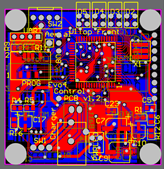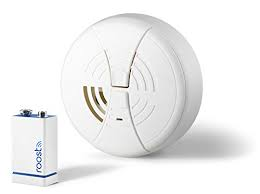A recent panel of experienced industry leaders urged companies to conduct a risk analysis of their overall supply chain to understand the “total cost of ownership” and make an informed offshore-onshore manufacturing decision. Each panelist shared a scenario that included manufacturing in the US as part of a trending hybrid strategy to better manage risks.
Prototype, NPI & First Production in US

Dior Wu, CEO of Meritronics, a contract manufacturer with plants in California, Las Vegas and China, advocates a hybrid model to clients as well. Rather than send a client’s engineer(s) to China to supervise early manufacturing runs, Dior will have low cost components shipped to the US for a small integration NPI run. To send the client’s engineer to China to oversee production of 500 pieces is easily $5k or $10 per trip. If production is in the US, they can work out the production kinks and bugs, and the client can continue working. Dior even encourages clients to do smaller first production runs in the US. If you do first production manufacturing in China, you have to be prepared to send a team there to supervise and approve the product being built.
Manufacture Components in Asia, Configure in US
It is short sighted to generalize that since labor costs in Asia are less expensive than in the US, you should manufacture overseas. Shirish Joshi, a manufacturing consultant with over 30 years industry experience, advocates a hybrid model for some of his clients. Noticing that a lot of the cost of component parts shipped to the US was the volumetric weight for packing materials, he looked for a savings. He has helped clients manufacture components in Asia and then bulk ship to the United States where they complete final configuration, kitting and packaging themselves.
Outsourced in Asia:
- Fabricated Parts
- Printed Circuit Assemblies
- Sub-assemblies
Configured in US:
- Final Assembly, Configuration, Programming (such as firmware), and Test
- Packaging & logistics
- Reverse logistics & repair
Although the labor cost is higher in the US, they are closer to the end customer, and the companies are better able to manage risks associated with changes in forecast, IP protection, and product mix or configuration.
For example, in the case of a complicated networking box with over $20k in cost, they chose to build the PCB and assembly overseas. They brought the components back to the US for assembly and test. Working out problems and sustaining the product locally was much simpler than having to travel to Asia to address issues.
Components Manufactured in US, Product Assembly in Mexico or Asia

For total cost of ownership, Cindy Eldridge, Western Area Director for Avnet Electronics, a global distributor, with 25 + years experience working with OEMs and contract manufacturers, thinks that there’s a lot of value in considering hybrid or blended models in a finished product environment, but also in a PCBA environment. Cindy has found that while it is counterintuitive, many of the technology parts suppliers will still offer better pricing in the US. This can complicate your manufacturing strategy, especially if you’ve already made a decision to manufacture your boards offshore. Cindy has observed a blended model, where some components absolutely have to be controlled from the US, which plays into the total cost of ownership of your board. For Cindy, the key is managing price and risk, and supply assurance. It’s not all about the lowest price of labor in Asia. Notably, she finds even though labor rates are higher in the US, there’s data that manufacturing rates in Mexico are now on par with rates in China.
Reshoring: Bringing back Manufacture from Asia

For Roost, a consumer electronics startup, their product is hybrid: designed in Sunnyvale, made in China. According to Jim Van Patton, VP of Operations, he’s discovered that the decision where to manufacture begins in product design. There are design decisions that you must make up front if you want to manufacture in the US, like eliminating labor intensive handwork and designing for automation. It doesn’t mean you can’t design that out or automate it later, which is what they are now doing at Roost. Their goal is to be manufacturing in North America in the next 18 months. They want to manufacture in the US and are actively designing their parts so that they can do that.


